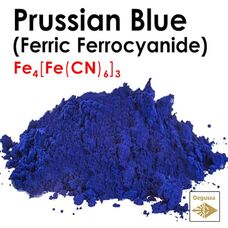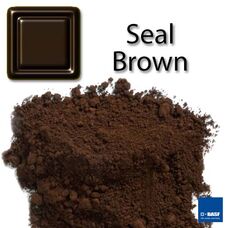Staining Clay Ceramic Pigments, Stains, pottery color
BUMBLEBEE YELLOW - Ceramic Pigments and Stains Degussa Colours
BUMBLEBEE YELLOW color powder mixed with water provides the cheapest and the most usual way of applying underglaze decor..
0.99€
CELADON GREEN - Ceramic Pigments and Stains Degussa Colours
CELADON GREEN color powder mixed with water provides the cheapest and the most usual way of applying underglaze decorati..
0.99€
CHOCOLATE BROWN - Ceramic Pigment DEGUSSA
CHOCOLATE BROWN color powder mixed with water provides the cheapest and the most usual way of applying underglaze d..
0.79€ 0.99€
CRIMSON RED - Ceramic Pigments and Stains Degussa Colours
CRIMSON RED color powder mixed with water provides the cheapest and the most usual way of applying underglaze decoration..
1.99€
EBONY BLACK - Ceramic Pigments and Stains Degussa
Color code: 232323Firing temperature: 890-1100°C (1640-2014°F) Lead content: lead-free, 0%..
0.99€
ELECTRIC PURPLE - Ceramic Pigments and Stains Degussa Colours
ELECTRIC PURPLE color powder mixed with water provides the cheapest and the most usual way of applying underglaze decora..
2.99€
FIRE ORANGE - Ceramic Pigments and Stains Degussa Colours
FIRE ORANGE color powder mixed with water provides the cheapest and the most usual way of applying underglaze decoration..
1.99€
FRENCH GREY - Ceramic Pigments and Stains Degussa Colours
FRENCH GREY color powder mixed with water provides the cheapest and the most usual way of applying underglaze decoration..
0.99€
LEMON YELLOW CRAYOLA - Ceramic Pigment Stain China
LEMON YELLOW color powder mixed with water provides the cheapest and the most usual way of applying underglaze decoratio..
0.99€
LILAC PURPLE - Ceramic Pigment Degussa
LILAC PURPLE color powder mixed with water provides the cheapest and the most usual way of applying underglaze decoratio..
1.99€
MIDNIGHT GREEN - Ceramic Pigments and Stains Degussa Colours
MIDNIGHT GREEN (sometimes also called Eagle green) is a dark cyan. It has been the primary team color for the Natio..
0.99€
PRUSSIAN BLUE - Ferric ferrocyanide, Iron hexacyanoferrate - A Journey into Berlin Blue: History, Chemistry, and Applications
Fe4[Fe(CN)6]3 Prussian Blue is a deep blue pigment that has been used in various applications, including art,..
1.59€ 1.99€
SEAL BROWN - Ceramic Pigment Degussa
SEAL BROWN color powder mixed with water provides the cheapest and the most usual way of applying underglaze decoration...
0.99€
WHITE - Ceramic Pigments and Stains Degussa Colours
WHITE color powder mixed with water provides the cheapest and the most usual way of applying underglaze decoration. Glaz..
0.79€ 0.99€
VERMILION RED - Cinnabar Ceramic Pigments Stains High Temperature Porcelain up to 1300 centigrade
VERMILION RED or CINNABAR is the highest quality color. Mixed with water provides the cheapest and the most usual way of..
2.99€
CYCLAMEN PINK - Ceramic Pigments and Stains Degussa
Many people want to know what is glaze. Glazing is a technique that requires:Prepared ceramic pigments, commonly referre..
0.99€
SAPPHIRE - Pigments, Stains, Oxides Degussa made in Germany HQ
Color code: 0F52BA Quantity: 10 g. (0,35 oz.) Firing temperature: 890-1160°C (1640-2120° F) (up..
0.99€
Cobalt Blue - Ceramic Pigments and Stains Degussa Colours
Color code: 0047AB Quantity: 10 - 450g.Firing temperature: 890°C - 1300°C (1640°F - 2380°F) (up..
1.59€
BLACKEST BLACK - Ceramic Pigment Jet Black High Temperature Porcelain up to 1300 centigrade
BLACKEST BLACK color powder mixed with water provides the cheapest and the most usual way of applying underglaze decorat..
1.19€
BOLE BROWN - Ceramic Pigment Degussa
BOLE BROWN color powder mixed with water provides the cheapest and the most usual way of applying underglaze decora..
0.79€ 0.99€
BROWN SUGAR - Ceramic Pigment Degussa
BROWN SUGAR color powder mixed with water provides the cheapest and the most usual way of applying underglaze decoration..
0.99€
IVORY - Ceramic Pigment Off-White Porcelain
IVORY color powder mixed with water provides the cheapest and the most usual way of applying underglaze decoration. Glaz..
1.11€
PISTACHIO GREEN - Ceramic Pigments and Stains Pistachio Color
PISTACHIO GREEN color powder mixed with water provides the cheapest and the most usual way of applying underglaze d..
0.99€
ARCTIC BLUE - Ceramic Pigments and Stains Degussa Colours
Many people want to know, what arctic blue color is, how to paint pottery arctic colours:Prepa..
0.99€

























